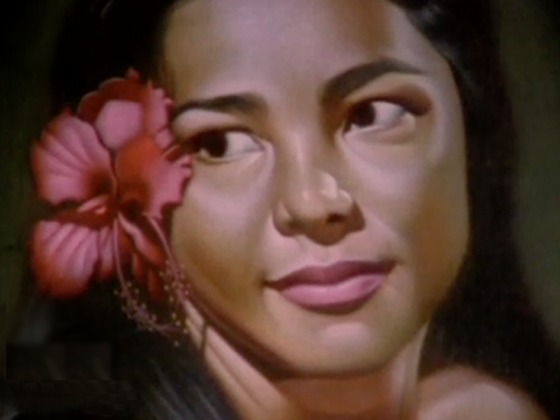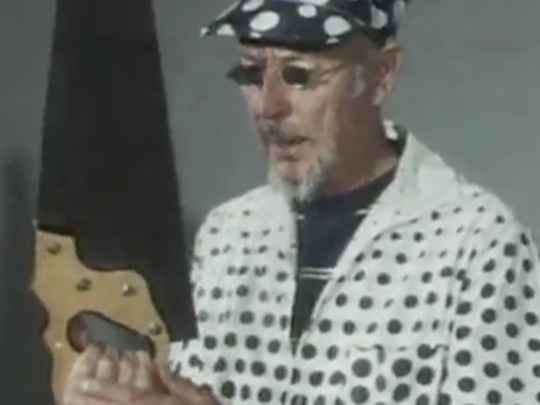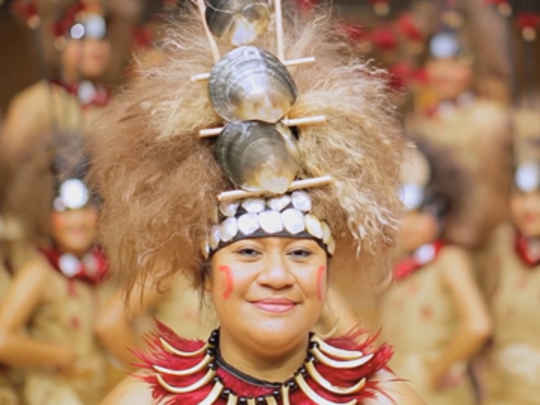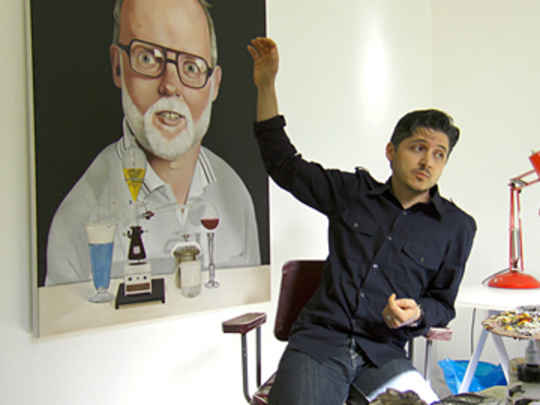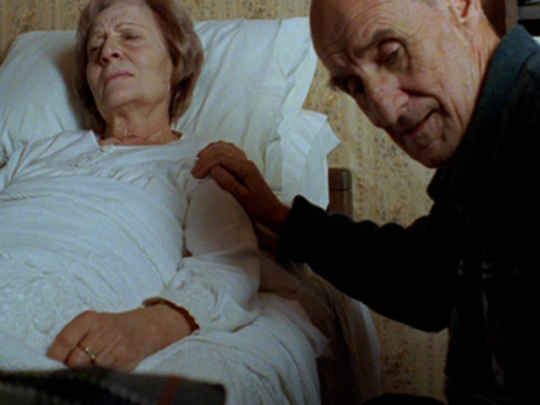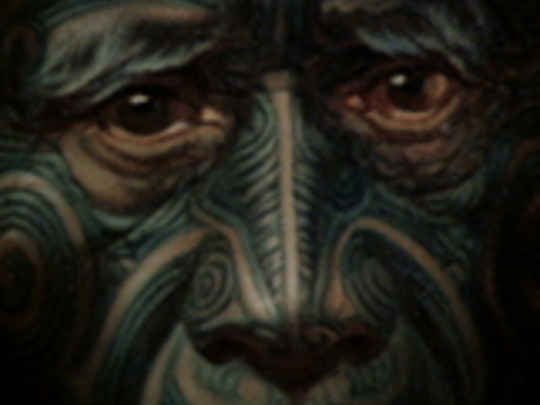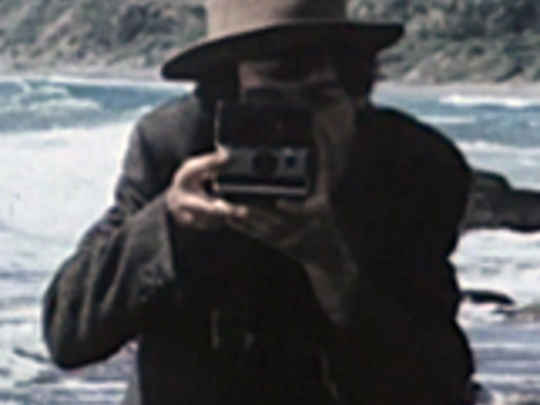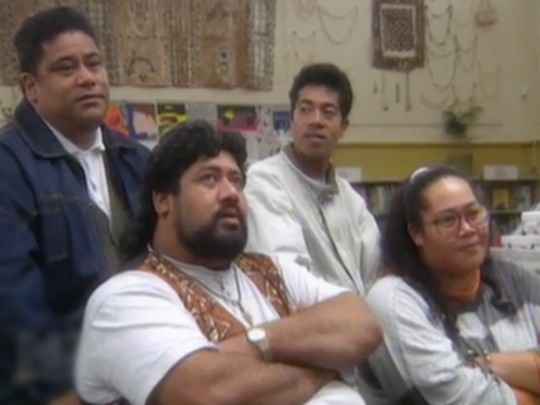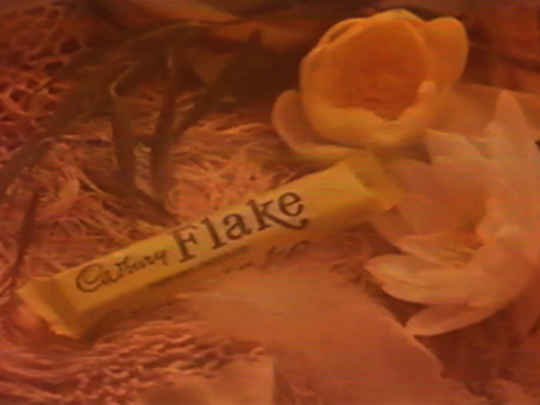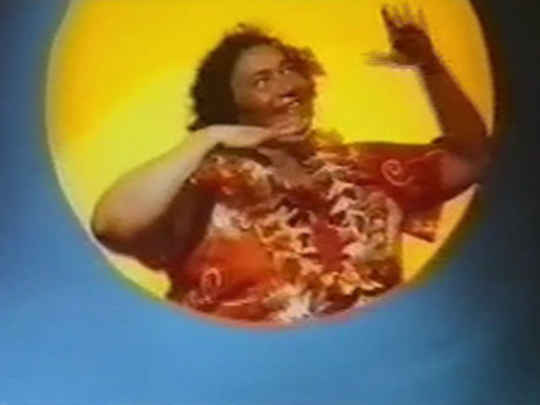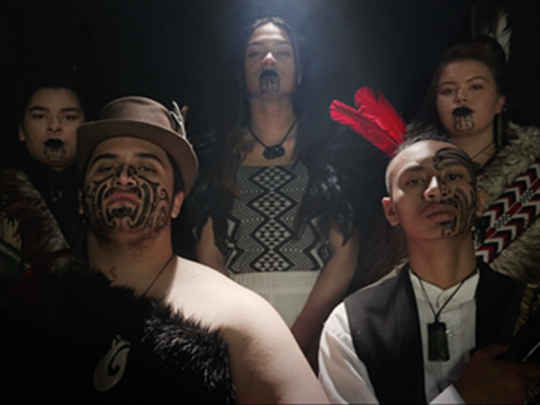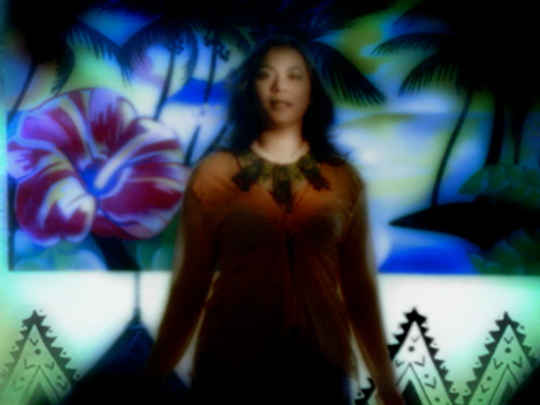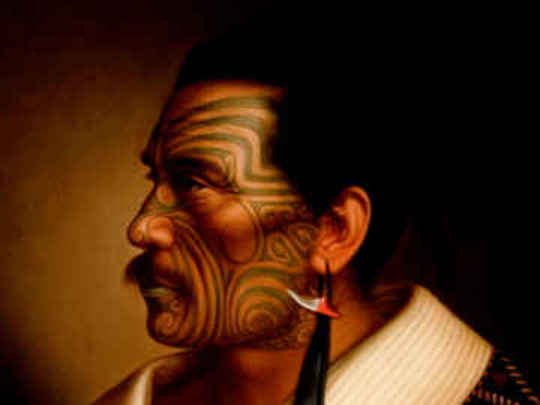Velvet Dreams
Television (Full Length) – 1997
A Perspective
If the black and white footage of Urale’s O Tamaiti (1996) provides a sobering and fresh approach to the portrayal of Pacific Island culture, Urale’s follow-up Velvet Dreams offers up another view of Polynesia by gleefully invoking the colourful and kitsch stereotype of the Dusky Maiden.
Framed as a faux detective narrative, Velvet Dreams tells the story of the mass-reproduced velvet painting genre (also known as Tiki Art) made primarily in the 1940s and 1950s by Western male artists. As Urale describes it, Velvet Dreams is, “really about exploring how these artists colonised the Pacific through painting images about our women, you know? You know, the clichéd, stereotypical images about Hawaii, the whole of the Pacific nation really.”
The plot involves a Sam Spade-styled narrator who walks into a second-hand shop and falls in love with a velvet painting. The film is structured as a search to find this painting. The narrator takes us on a journey from the retro lounge bar culture of Auckland, to the art galleries of Seattle and the South Pacific islands of Moorea and Tahiti (where the ‘Maidens’ and their painters first met). The journey ends back in New Zealand, where the narrator meets the eccentric painter of his Dusky Maiden: Charlie McPhee, a Gaugin-like figure who regales the narrator with stories of his youthful exploits.
Screened on New Zealand national television as part of the Work of Art series (1993—1998), Velvet Dreams contributes to Urale’s burgeoning oeuvre, which includes shorts O Tamaiti (1996) and Still Life (2003), HipHopNZ (2003) and later her first feature-length film, Apron Strings (2008). Where her other works have drawn upon the responsibilities of migrant children (O Tamaiti) and themes of euthanasia and old age (Still Life), Velvet Dreams is at once a tender portrait of a unique character (McPhee) and an arch art odyssey.
The detective story is interwoven with more conventional documentary sections where prominent art historians, artists, and cultural commentators (shot 'talking heads' style), provide an analytical history of the Dusky Maiden stereotype.
This odd mix of fiction and non-fiction draws upon a tradition that includes such mock documentary films as Woody Allen’s Zelig (1983) and Rob Reiner’s This Is Spinal Tap (1984). The format allows Urale to offer a critique of colonial stereotypes at the same time as it enables a certain playful affirmation of these cliché images and the men who made them.
As Urale notes, “I'm a Polynesian woman myself, and I was fascinated that these paintings were of Polynesian women. So [making Velvet Dreams] was a chance of a lifetime to have me a go on these white painters who painted these Polynesian women. And I don't know, I ended up falling in love with these white painters — I think they're just amazing, you know?”
Velvet Dreams even attempts a cheeky piece of revisionist art history as McPhee is presented as an unheralded outsider artist, the camera respectfully lingering over his soft-focus air-brushed beauties — wispy, seductive – as if they are in the National Portrait Gallery. As Urale commented to the Seattle Times, she wanted "to prove that velvets are worthy of recognition, [that] they are as aesthetically pleasing as any Renoir and as technically good as any Gauguin.”
At one point Waitakere City mayor Bob Harvey opines that McPhee is, “I think, one of the foremost painters of the South Pacific”, and there’s a wry moment where the roguish McPhee (with his winning, yellowing, ‘comb-down’) comments on another Titrangi icon and famous ‘Mc’– Colin McCahon:
“I’m not that impressed with abstract [paintings] and all that sort of thing … there’s nothing to it all really … Colin McCahon in those days, (he was a painter) ... but I’m not impressed with his paintings unfortunately; [one of McCahon’s paintings] sold for $15, 000. I’m afraid I wouldn’t give you tuppence for it!”
Comparing the value of a ‘McPhee’ and a ‘McCahon’ is clearly silly, but Velvet Dreams has such a sweet-as-hibiscus charm that you enjoy the absurdity of it all and appreciate all the more the cheap thrills of a velvet painting.
Just as This Is Spinal Tap provides a parody of rock stars in a loving way, so too Velvet Dreams recognises the many different ways in which Pacific Islanders and Western men have lived with, created, and desired Dusky Maiden images.
Yet, Velvet Dreams’ excessive repetition of images of naked and nubile young women (who perform as live re-enactments of paintings, or who appear in extreme close-up shots from record covers, magazine articles and paintings), also reminds its audience of how Pacific Island women have been objectified in popular culture. Accordingly, Urale’s use of cinematography and editing in Velvet Dreams highlights the ambivalent effects of these mass-produced images while the oily-voiced narrator draws attention to the excesses of a world-weary Western culture that historically looked to the Pacific for its leisure and pleasure.
Part of a vibrant and increasingly visible group of Pacific Island cultural producers living in Aotearoa-New Zealand, Urale uses irony and humour in Velvet Dreams to offer up a refreshing view of contemporary Polynesian stereotypes in the wake of a history of colonisation.
“It dawned on me that she was never going to be a reality”, the narrator remarks near the end, resigned to never locating his velvet dream. There is no mysterious femme fatale or hidden revelation for the detective to ‘solve’. Instead, Urale lays the clues and trains the viewer’s gaze to anticipate an outcome, which never arrives. In doing so, Velvet Dreams dances a playful line between celebrating the pleasure of looking while questioning who is looking and what’s being looked at:
"Yeah, I think they're beautiful images, but what I guess I'm trying to say in Velvet Dreams is that there are more aspects about the Pacific than just that image ... The only thing they convey is ... sensual paradise, all those really clichéd things about the Pacific, which are partly true. But then there's all these other amazing things about the Pacific that people don't know about."
